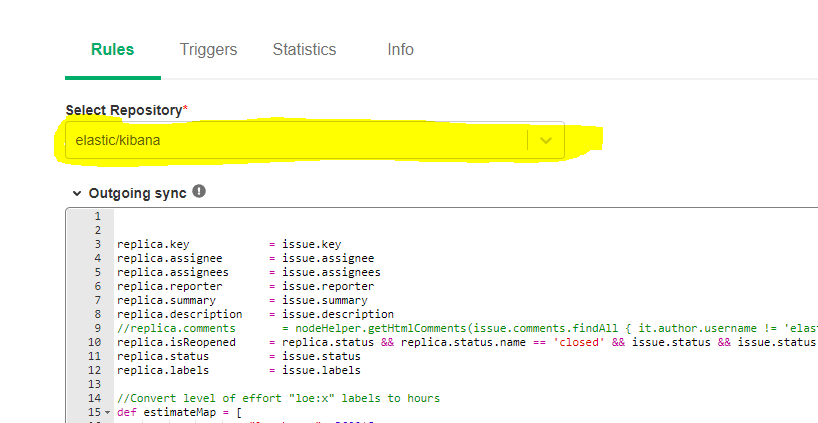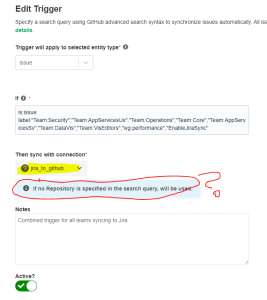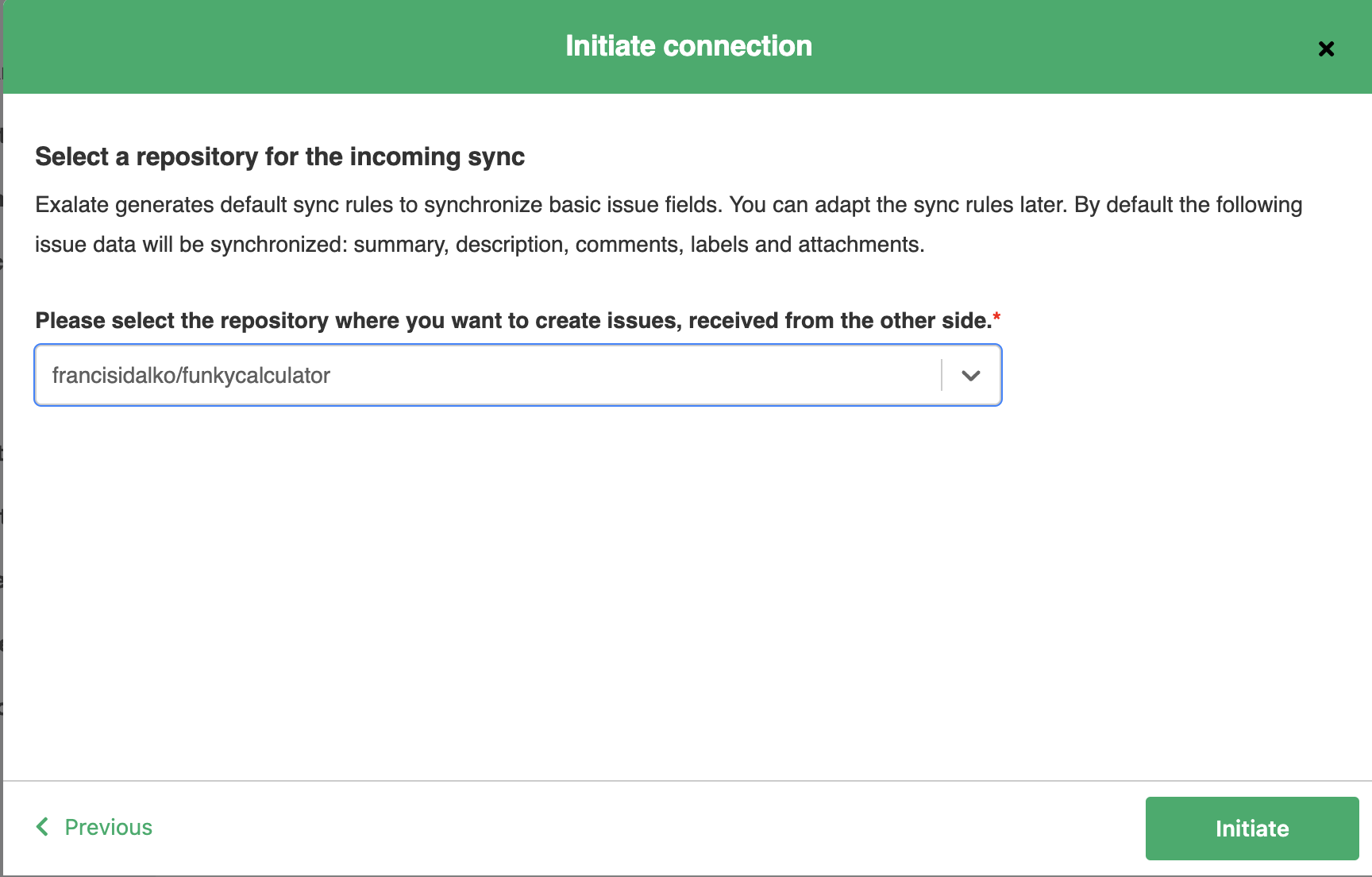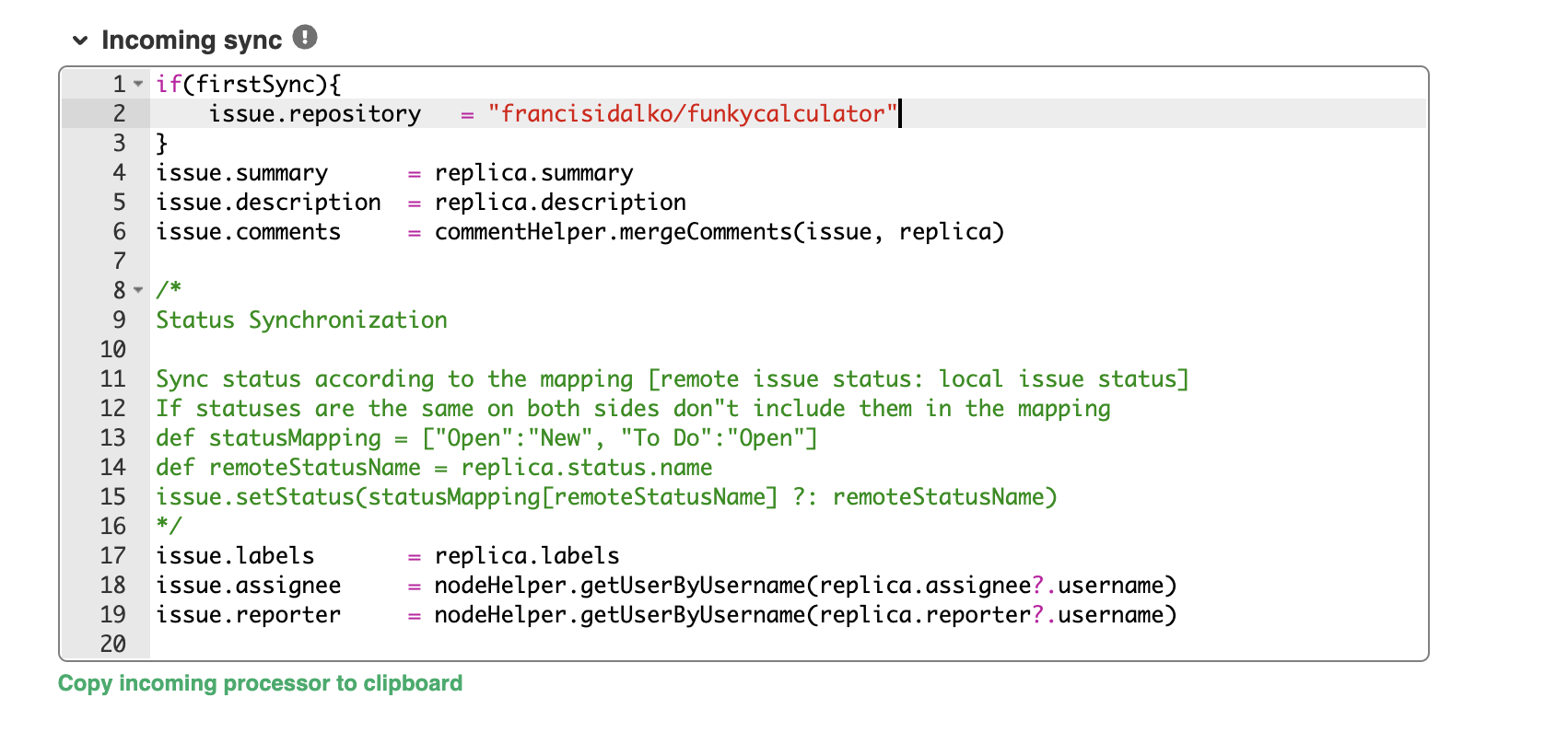Answer by Francis Martens (Exalate) on 15 April 2022
Hi,
There are different ways to implement these, it all depends where the mapping can be stored.
One of the approaches is to use a webservice which contains the mapping, or even an online database …
Can you detail out where this table can reside?
Support for multiple repositories
In version 5.4.0, we enhanced Exalate for Github to support multiple repositories per connection.
Instead of creating hundreds of connections for hundreds of repositories you can work with a single connection
- issue.repository contains the name of the repo the issue is coming from
This can be used at the receiving side to select the target project
- Triggers are now ‘organisation’ wide (meaning including all repositories the exalate proxy user can access), and can be refined if necessary using the repo: filter
Comments:
Petr Klapka commented on 21 April 2022
I’ve found (hopefully) the person in our org who can answer where our lookup table can be found and if it can be accessed via a web service. I’m waiting on a reply from them. Meanwhile, are there certain JSON formats or databases and schemas that Exalate supports for this?
Also, I’m confused by this new relationship and scope of connections, triggers and repos.
My understanding was that a connection was a relationship between exactly one GH repo and exactly one Jira instance. Issues could be syncd to multiple Jira projects via script logic, and there could be multiple triggers per connection. Since triggers are associated to exactly one connection, and a connection is associated to exactly one repo, triggers logically function on just one repo.
Ex: Here is my connection. It applies to a specific repo:

I see no way to make the scripts in the connection apply to more than the the one repo at the top of the UI.
Here is my trigger. It applies to a specific connection:

If the connection can only work with one repo, what is the point of being able to specify multiple repos (per your example) in the trigger query?
Francis Martens (Exalate) commented on 21 April 2022
That is the point
> If the connection can only work with one repo, what is the point of being able to specify multiple repos (per your example) in the trigger query?
With the latest version - you can have a connection linked with multiple repo’s
So with one connection you can describe the integration between M repo’s and N Jira projects
Petr Klapka commented on 21 April 2022
Okay, understood that is how it is supposed to work, but the connection still only allows you to select one repo in the UX:
If I create a connection and choose 1 repo (I have no other choice), then I create a trigger that includes multiple repos, and assign the connection to that trigger… what will happen? Will the combination of trigger/connection work on the ONE repo selected in the connection, or on the multiple repos specified in the trigger? That is maybe a better way of expressing the confusion I’m having.
Francis Martens (Exalate) commented on 21 April 2022
First - the reason why you have to indicate a repo is because of historic and backward compatibility
If you would create a new connection, no such setting is there

Note however that in the create connection dialog you will find the mandatory dropdown box
This value is used to compose the incoming sync processor - which can be adapted in the next step.
The reason why this is in the product, is because if you don’t specify a target repo, the first sync an evaluator will try will fail …
By selecting a repo here

You will get

Petr Klapka commented on 21 April 2022
This makes sense now, thank you. Apologies for the segway.






